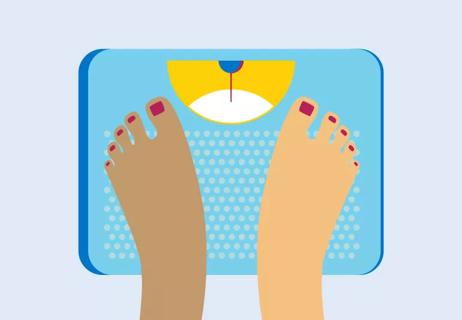When — and when not — to trust BMI calculators

Using body mass index (BMI) to measure health for men and people assigned male at birth (AMAB) is as accepted as it is controversial. Physiologist Chris Dempers and fitness specialist Colt Mcdonough explain why BMI calculators can be so divisive, but when you still might want to use them.
Advertisement
Cleveland Clinic is a non-profit academic medical center. Advertising on our site helps support our mission. We do not endorse non-Cleveland Clinic products or services. Policy
BMI uses math to measure your body fat: It’s your weight in kilograms divided by your height in meters squared.
“BMI gives you an overall health assessment. Your number indicates if you’re in the healthy, underweight, overweight or obesity range,” says Dempers. “But it doesn’t factor in body fat or muscle mass, so there are BMI limitations.”
BMI is one-size-fits-all — it doesn’t account for naturally occurring body differences. “It’s the same BMI chart for men and women,” adds Dempers, even though women and people assigned female at birth (AFAB) typically have more body fat.
But in a time-crunched society, the benefits of BMI measurements are clear. “Many physicians use it because it’s a quick, affordable assessment for the general population: average-sized people who don’t exercise regularly,” says Dempers.
BMI gives a fairly accurate measurement of where people fall in the weight range and whether the extra weight has them on the verge of Type 2 diabetes, heart disease and other conditions. “It can motivate people to jump-start a healthier lifestyle,” he explains.
To calculate your BMI, use this adult BMI calculator.
You can also use these formulas to calculate your BMI:
Advertisement
Health experts say a number between 18.5 to 24.9 is a healthy BMI for men and people AMAB. The same goes for women and people AFAB. Check your weight classification in the BMI chart below.
| BMI | Weight classification |
|---|---|
| Below 18.5 | Underweight |
| 18.5-24.9 | Normal |
| 25.0-29.9 | Overweight |
| 30.0 or higher | Obesity |
| BMI | |
| Below 18.5 | |
| Weight classification | |
| Underweight | |
| 18.5-24.9 | |
| Weight classification | |
| Normal | |
| 25.0-29.9 | |
| Weight classification | |
| Overweight | |
| 30.0 or higher | |
| Weight classification | |
| Obesity |
BMI is an old tool — it was developed almost two centuries ago. “At that time, they got most of their data from corpses, so that’s what healthy BMI ranges are based on,” says Dempers. “People’s average height and weight have also increased over the years, which further throws things off.”
Dempers and Mcdonough say you should take your BMI with a grain of salt if you are:
Dempers and Mcdonough say it’s best to view BMI as part of the puzzle. These other tools can help complete the picture:
Advertisement
| WHR for men and people AMAB | Health risks for obesity-related conditions |
|---|---|
| 0.95 or lower | Low |
| 0.96 to 1.0 | Moderate |
| 1.0 or higher | High |
| WHR for men and people AMAB | |
| 0.95 or lower | |
| Health risks for obesity-related conditions | |
| Low | |
| 0.96 to 1.0 | |
| Health risks for obesity-related conditions | |
| Moderate | |
| 1.0 or higher | |
| Health risks for obesity-related conditions | |
| High |
Make sure you stand up straight. To find out your waist circumference, place a tape measure around the smallest part of your waist, which is typically above your belly button. Then to figure out your hip circumference, do the same with largest part of your hips, typically the widest part of your buttocks. Divide your waist circumference by your hip circumference.
“You can have a good BMI, but your WHR could be off. You could have a big old beer belly, but on paper, your height and weight are still within the normal range,” notes Dempers. “To accurately figure out your body fat percentage, enlist an exercise physiologist or trainer at a fitness center with experience to help you.”
Then use that information to help make positive changes. “The mantra ‘use it or lose it’ is truthful,” says Mcdonough. “If you need to lose weight or maintain muscle, stay consistent with a balanced diet and regular exercise. That can do the trick to keep you healthy for the long term.”
Advertisement
Learn more about our editorial process.
Advertisement

Plus, 4 factors that can make BMI misleading

From your ideal BMI to when to take it with a grain of salt

According to the latest research, one size truly doesn’t fit all

Having underweight, having overweight and having obesity can be dangerous for your heart

Type 2 diabetes isn’t inevitable with these dietary changes

Applying a hot or cold compress can help with pain